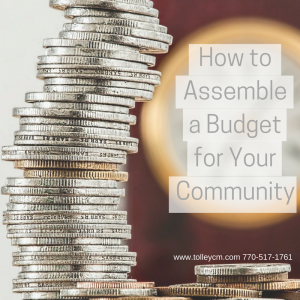
Assembling the budget for the next year is an important part of the board’s duties at the end of each year. This not only encourages the board to evaluate the success of the past budget, it also helps to plan upcoming projects for the next year and beyond. Additionally, assembling a budget can help the board to assess whether or not they need to conduct a reserve study or set up special assessments for the upcoming year.
The board will first need to back-track to the previous year’s budget to assess whether it worked well for the community or not. This includes considering whether or not money had to be pulled from reserves in order to finance an unexpected project during the year. Evaluating the property for wear and tear on a yearly basis is an important part of making sure the new budget will be effective for the community as unexpected repairs can be costly and have the potential to dismantle a budget quickly and without notice.
Next the board needs to decide what to include on the budget. We recommend including GL codes, a description of the expense, the previous year’s budget (2017), projected totals for the previous year (2017), and then the current budget (2018).
Remember to include all amenities, insurance, tax fees, local, state and federal costs, filing costs, and collections costs.These costs, known as the operating budget, should not be short-changed as this may result in insufficient funds when you need them. Additionally, do not forget to plan to put money into a reserve for future projects as needed by evaluation of wear and tear. The aforementioned costs may not cover everything your community association’s funds go towards. Evaluate your community’s expenses closely and you are likely to create a budget that will work well for the community as a whole.
Post By: Sarah Scott

